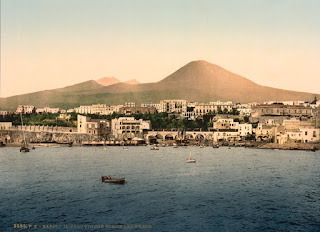Giovanni dalle Bande Nere - condottiero
Soldier who fathered Cosimo I de' Medici
Giovanni dalle Bande Nere, the military leader regarded as the last of the great Italian condottieri, was born on this day in 1498. The condottieri were professional soldiers who hired themselves out to lead the armies of the Italian city-states and the Papacy in the frequent wars that ensued from the Middle Ages through to the Renaissance. Giovanni spent much of his military career in the service of Pope Leo X, the Medici pope. Indeed, he was a Medici himself. Baptised Ludovico, he was the son of Giovanni de’ Medici. His mother, Caterina Sforza, the powerful daughter of the Duke of Milan, renamed him Giovanni in memory of his father. He became Giovanni dalle Bande Nere much later, when he added black stripes to his military insignia in a show of mourning for Pope Leo X. His son, Cosimo, would go on to be Cosimo I de’ Medici, the first Grand Duke of Tuscany. Read more…
____________________________________________________________________
Vincenzo Viviani – mathematician and scientist
Galileo follower's name lives on as moon crater
Forward-thinking scientist Vincenzo Viviani was born on this day in 1622 in Florence. Viviani worked as an assistant to Galileo Galilei and after his mentor's death continued his experimental work in the field of mathematics and physics. This work was considered so important that Viviani has had a small crater on the moon named after him. In 1660 Viviani conducted an experiment with another scientist, Giovanni Borelli, to determine the speed of sound by timing the difference between seeing the flash and hearing the noise of a cannon being fired from a distance. As his reputation as a mathematician grew, Viviani started to receive job offers from abroad but stayed in Italy as court mathematician to Grand Duke Ferdinando II de' Medici. He also published a book on engineering. Read more...
_________________________________________________________________
Vincenzo Gioberti - philosopher and politician
Writings helped bring about unification of Italy
Vincenzo Gioberti, a philosopher regarded as one of the key figures in the Italian unification, was born on this day in 1801 in Turin. He became prime minister of Sardinia-Piedmont in December 1848, albeit for only two months. Although he was an associate of the republican revolutionary Giuseppe Mazzini - and was arrested and then exiled as a result - he did not agree with Mazzini’s opposition to the monarchy and was not an advocate of violence. However, he was staunchly in favour of a united Italy, particularly because of his conviction that Italians represented a superior race, intellectually and morally, and that by pulling together as one nation they could assert a profound influence on civilisation that would benefit the world. His book, Del Primato civile e morale degli Italiani (The civic and moral primacy of the Italians), is said to have helped give momentum to the unification campaign. Read more...























